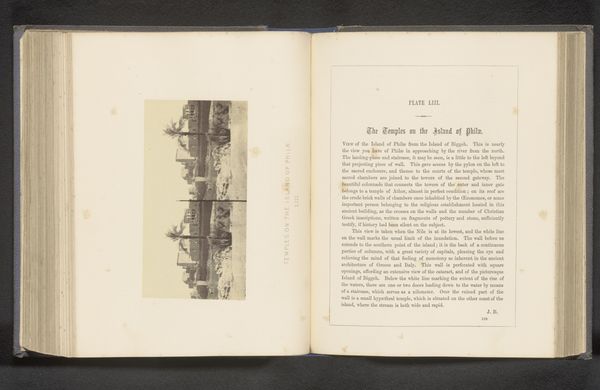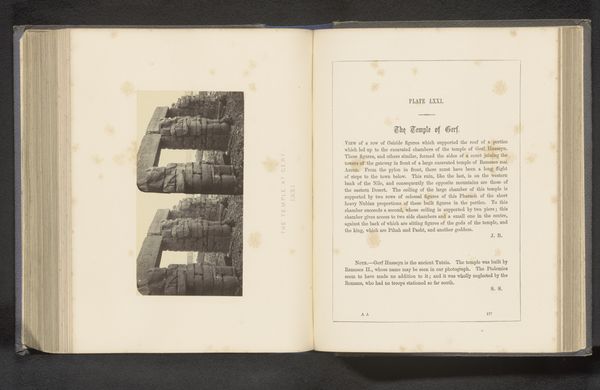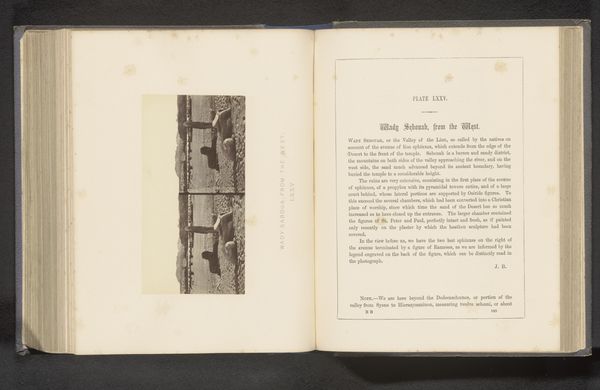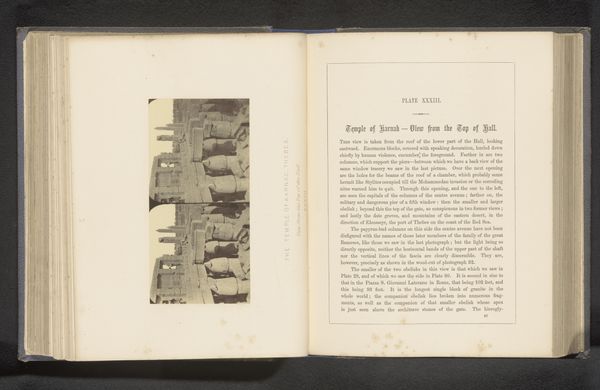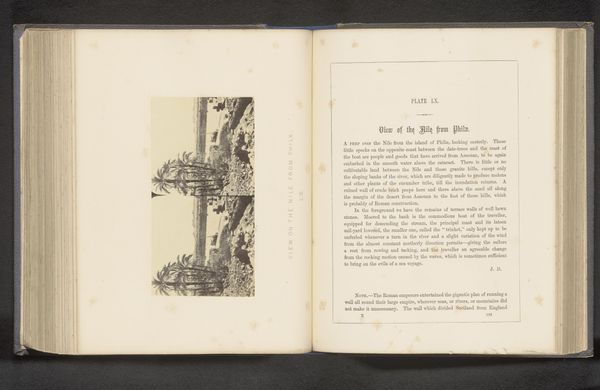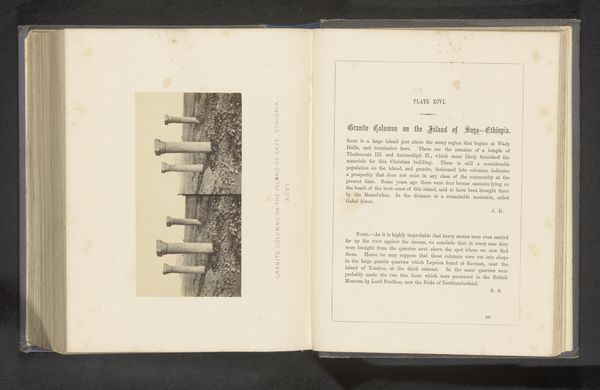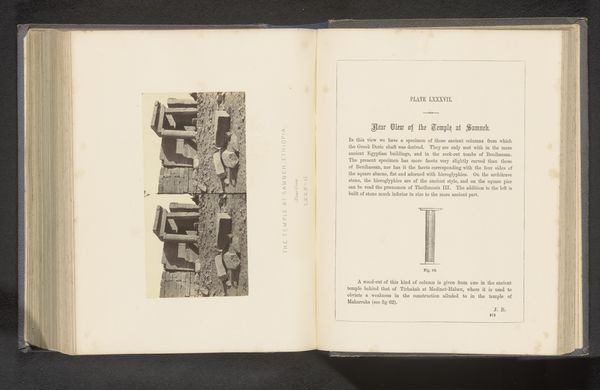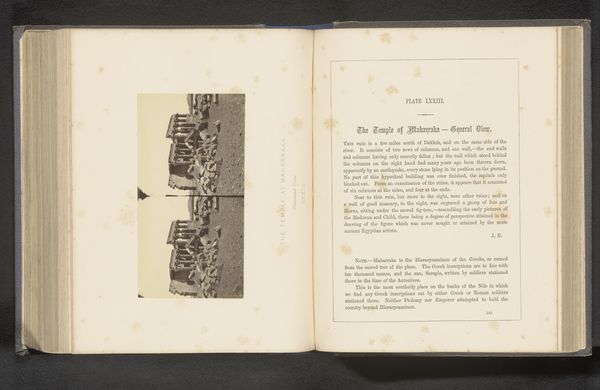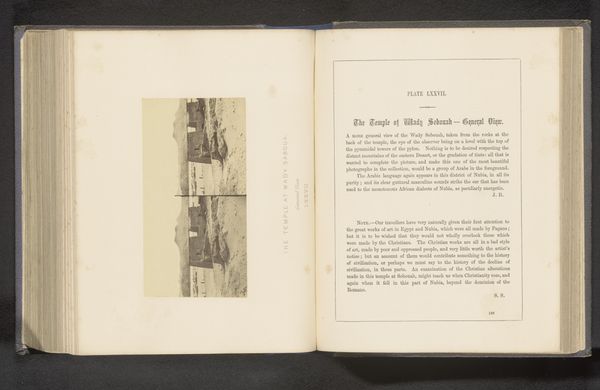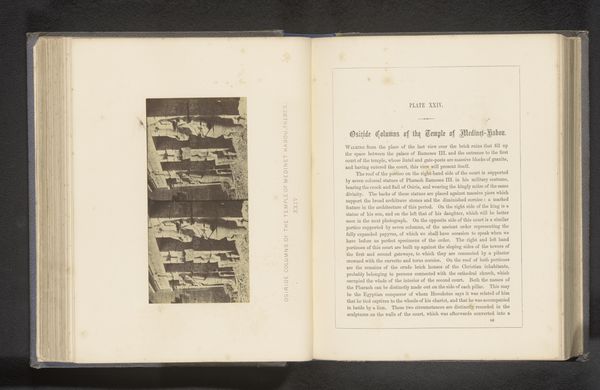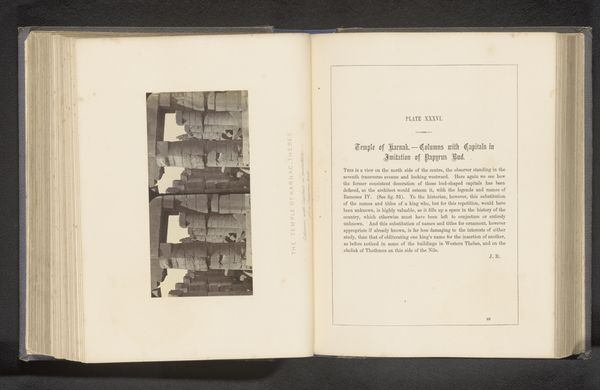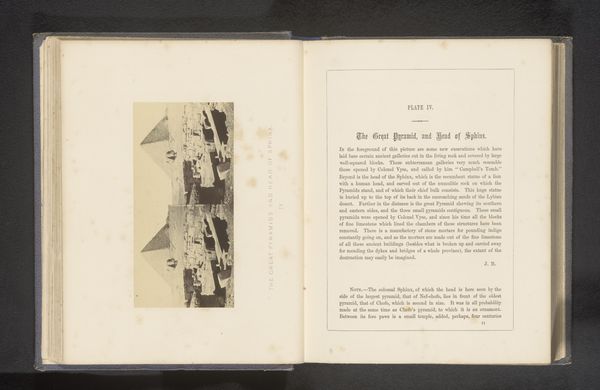
print, photography, gelatin-silver-print, albumen-print
# print
#
landscape
#
ancient-egyptian-art
#
photography
#
ancient-mediterranean
#
orientalism
#
gelatin-silver-print
#
albumen-print
Dimensions: height 76 mm, width 144 mm
Copyright: Rijks Museum: Open Domain
Editor: So, this is Francis Frith’s "Tempel van Dendur," taken before 1862. It’s an albumen print of an ancient Egyptian temple. The image feels so…distant, almost ghostly, the way the light renders the stone. What stands out to you when you look at this print? Curator: The power of photography here lies in its capacity to document and evoke cultural memory. Notice how Frith captures the Temple, not just as an architectural marvel, but as a symbol laden with historical weight. Does the image convey a sense of stillness, perhaps? Editor: It does, very much so. It feels frozen in time. Curator: Exactly! Think about what the temple symbolized to the ancient Egyptians - power, religion, the cosmos itself. Then consider how that symbolism shifted through time, being reinterpreted by Romans and, later, Europeans like Frith. Does that contrast of permanence and shifting understanding interest you? Editor: Definitely! It’s like seeing layers of meaning accumulating over centuries. It makes me think about the concept of Orientalism and how Frith's Western gaze shapes our understanding. Is he truly capturing the essence of Dendur, or is he imposing a Western interpretation on it? Curator: That’s the crucial question, isn't it? Photography promises objectivity, but it’s always mediated. The very act of framing, of choosing what to include and exclude, carries cultural baggage. What aspects of ancient Egyptian symbolism might be missed, or emphasized? Editor: The way the stark landscape almost swallows the temple…It makes you consider the fragility of human construction against the backdrop of nature and time. It gives a very poignant meditation on time and symbolism, a multi-layered view. Curator: Indeed, and perhaps that’s what makes Frith's photograph so compelling, despite its potential biases. It reminds us that cultural memory is always a process of negotiation, of looking backward through the lens of the present. Editor: Absolutely. Seeing this print and thinking about its layered history and possible Orientalist perspective has opened up my eyes to a whole new way of interpreting photographic images, as time capsules and potential cultural artifacts.
Comments
No comments
Be the first to comment and join the conversation on the ultimate creative platform.
